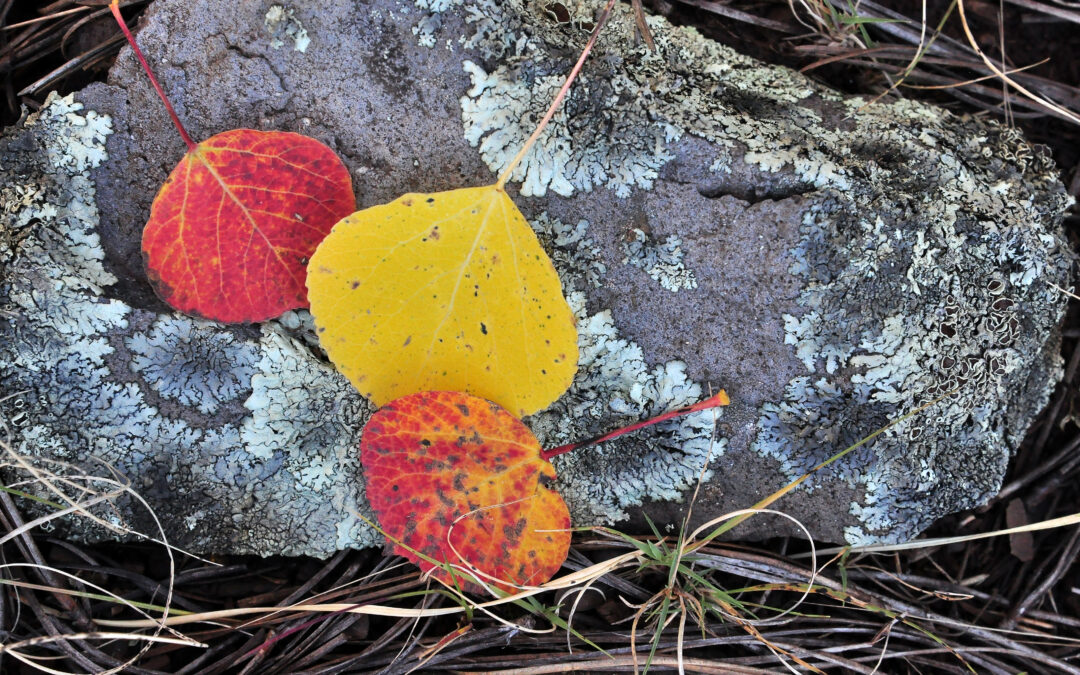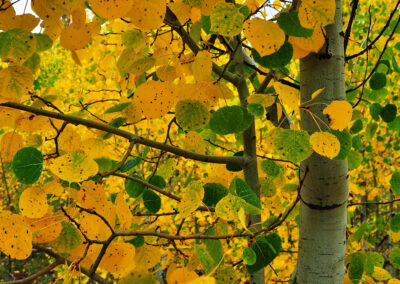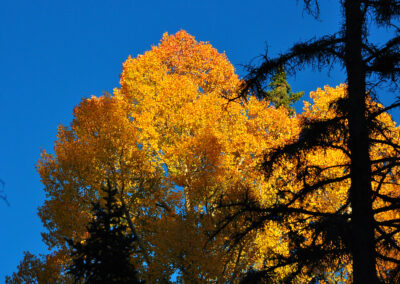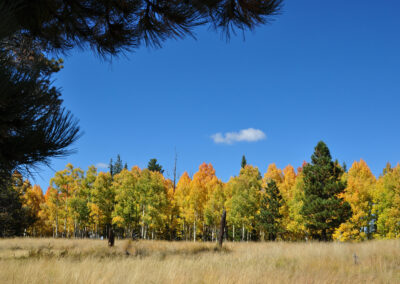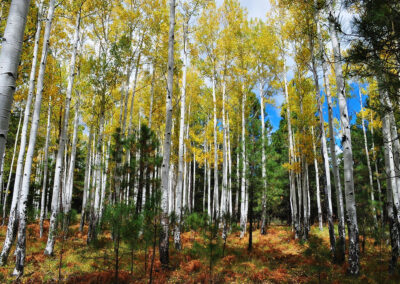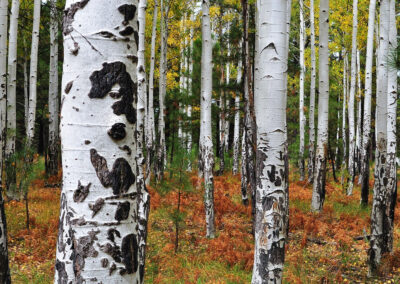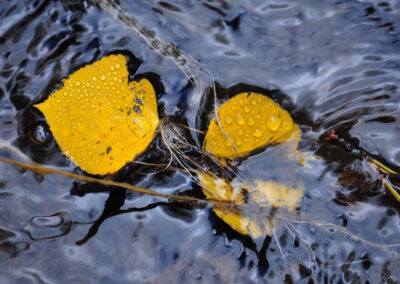Fall may signal the end of the growing season, but each fall also highlights nature’s rebirth when you visit Arizona’s the White Mountains.
The spectacular aspen stands in the White Mountains offer a wonderful day trip in search of fall foliage. Thousands of new aspens have sprung up from the devastation of the 2011 Wallow wildfire, Arizona’s largest at 538,000 acres. These thick aspen stands are now 10-20 feet tall as they emerge amid the blackened stumps of mixed conifer near mature forestlands that survived the flames.
The four-hour minimum drive from Prescott to the White Mountains isn’t a short one, so you should be either an early riser for this day trip or be prepared to stay overnight if you can’t get enough of this golden-hued beauty in just a day.
The aspen stands of the White Mountains begin to gather along Highway 260 as you enter the White Mountain Apache Reservation just east of Pinetop-Lakeside. Be aware of pandemic-related closures on the reservation by checking the tribe’s website at whitemountainapache.org. While about half of the White Mountains Range is located on the Apache reservation, just about all the rest is located on the Apache-Sitgreaves National Forest.
Even during the tribe’s recreational closure, people can still drive through the reservation on major state highways such as 260 and 273. For a quick view of the aspens on paved roads, take Highway 273 southeast to Big Lake on the Apache-Sitgreaves National Forest. Start by pulling over at the intersection of highways 260 and 273 for a 360-degree view of brilliant aspen stands in the distance. Then the slow drive along 273 offers several more opportunities to pull over and enjoy various trails through the aspen, including a short one along the southwestern shoreline of Big Lake.
Miles and miles of unpaved roads on the “A Bar S” forest are surprisingly smooth for passenger cars (unless you hit the annoying washboard spots). Popular aspen viewing locations along dirt roads in the White Mountains of the A Bar S include:
- The Greens Peak area: from Highway 260 about a mile after entering the A Bar S, drive north on Forest Road 117.
- Thompson Trail: reachable from Highway 273 via Forest Road 116 (and via a different route from Big Lake), it follows the scenic West Fork of the Black River for some extra eye candy.
- Escudilla Mountain (farthest east): from Highway 260 go south on Highway 191 and east on FR 8056 to the trailhead.
No matter where you travel, be sure to get out of the car long enough to hear the quaking aspens chime in the wind and watch them shimmer in the sunlight.
If You Go:
Where: From Prescott, drive to Camp Verde via Highways 69 and 169, then hit 260 for the rest of the journey to the edge of the White Mountains.
When: Fall colors in the White Mountains typically peak during the first three weeks of October. For more detailed information on the timing of fall colors, call the Apache-Sitgreaves National Forest office at 928-333-4301.
What to bring: If traveling the backroads, it’s best to purchase an A Bar S forest map (which often are available at the Prescott National Forest office at 344 S. Cortez Street in Prescott). Be prepared for snow just in case the weather turns cold. Daily high temperatures average around 60 degrees in October.

